Nginx高级特性实操
导读
nginx从入门到精通,点我直达
下载nginx与安装

安装依赖
yum -y install gcc zlib zlib-devel pcre-devel openssl openssl-devel
上传nginx至服务器中
上传至:/usr/local/software/service
解压:
cd /usr/local/software/service/
tar -zxvf nginx-1.20.1.tar.gz
编译
cd /usr/local/software/service/nginx-1.20.1
./configure
make && make install
默认安装路径
/usr/local/nginx
启动nginx
cd /usr/local/nginx/sbin
./nginx
- 设置软连接
ln -n /usr/local/nginx/sbin/nginx /usr/local/sbin
访问
ip:80

购买阿里云域名
nginx目录
核心目录
默认安装位置:/usr/local/nginx
conf #所有配置文件目录
nginx.conf #默认的主要的配置文件
nginx.conf.default #默认模板
html # 这是编译安装时Nginx的默认站点目录
50x.html #错误页面
index.html #默认首页
logs # nginx默认的日志路径,包括错误日志及访问日志
error.log #错误日志
nginx.pid #nginx启动后的进程id
access.log #nginx访问日志
sbin #nginx命令的目录
nginx #启动命令
常用命令
./nginx #默认配置文件启动
./nginx -s reload #重启,加载默认配置文件
./nginx -c /usr/local/nginx/conf/nginx.conf #启动指定某个配置文件
./nginx -s stop #停止
#关闭进程,nginx有master process 和worker process,关闭master即可
ps -ef | grep "nginx"
kill -9 PID
nginx核心配置文件
nginx.conf
#user nobody; # 指定nginx worker进程运行以及用户组
worker_processes 1;
#error_log logs/error.log; # 错误日志的存放路径,和错误日志
#error_log logs/error.log notice;
#error_log logs/error.log info;
#pid logs/nginx.pid; # 进程PID存放路径
events {
use epoll;
# 作为反向代理来说,最大并发数量应该是worker_connections * worker_processes/2。因为反向代理服务器,每个并发会建立与客户端的连接和后端服务的连接,会占用2个连接
worker_connections 1024;
}
http {
include mime.types;
default_type application/octet-stream;
# 自定义服务日志
#log_format main '$remote_addr - $remote_user [$time_local] "$request" '
# '$status $body_bytes_sent "$http_referer" '
# '"$http_user_agent" "$http_x_forwarded_for"';
#access_log logs/access.log main;
# 是否开启高效传输模式 on开启 off关闭
sendfile on;
# 减少网络报文段的数量
#tcp_nopush on;
#keepalive_timeout 0;
# 客户端连接保持活动的超时时间,超过这个时间之后,服务器会关闭该连接
keepalive_timeout 65;
#gzip on;
# 虚拟主机配置
server {
listen 80; # 虚拟主机的服务端口号
server_name localhost; # 用来指定IP地址或域名,多个域名之间
#charset koi8-r;
#access_log logs/host.access.log main;
# url地址匹配
location / {
root html; # 服务默认启动路径
index index.html index.htm; # 默认访问文件,按照顺序找
}
#error_page 404 /404.html; # 错误状态码的显示页面
# redirect server error pages to the static page /50x.html
#
error_page 500 502 503 504 /50x.html;
location = /50x.html {
root html;
}
# proxy the PHP scripts to Apache listening on 127.0.0.1:80
#
#location ~ \.php$ {
# proxy_pass http://127.0.0.1;
#}
# pass the PHP scripts to FastCGI server listening on 127.0.0.1:9000
#
#location ~ \.php$ {
# root html;
# fastcgi_pass 127.0.0.1:9000;
# fastcgi_index index.php;
# fastcgi_param SCRIPT_FILENAME /scripts$fastcgi_script_name;
# include fastcgi_params;
#}
# deny access to .htaccess files, if Apache's document root
# concurs with nginx's one
#
#location ~ /\.ht {
# deny all;
#}
}
# another virtual host using mix of IP-, name-, and port-based configuration
#
#server {
# listen 8000;
# listen somename:8080;
# server_name somename alias another.alias;
# location / {
# root html;
# index index.html index.htm;
# }
#}
# HTTPS server
#
#server {
# listen 443 ssl;
# server_name localhost;
# ssl_certificate cert.pem;
# ssl_certificate_key cert.key;
# ssl_session_cache shared:SSL:1m;
# ssl_session_timeout 5m;
# ssl_ciphers HIGH:!aNULL:!MD5;
# ssl_prefer_server_ciphers on;
# location / {
# root html;
# index index.html index.htm;
# }
#}
}
accessLog日志挖掘
access.log日志用处
- 统计站点访问ip来源、某个时间段的访问频率
- 查看访问最频的页面、Http响应状态码、接口性能
- 接口秒级访问量、分钟访问量、小时和天访问量
- ...
默认配置
nginx.conf文件中的配置!!!
#log_format main '$remote_addr - $remote_user [$time_local] "$request" '
# '$status $body_bytes_sent "$http_referer" '
# '"$http_user_agent" "$http_x_forwarded_for"';
示例
223.94.83.67 - - [31/Oct/2021:12:12:13 +0000] "GET /prod-api/admin/v1/menu/get_routers HTTP/1.1" 200 1442 "http://47.11.11.11:9119/login?redirect=%2Findex" "Mozilla/5.0 (Windows NT 10.0; Win64; x64) AppleWebKit/537.36 (KHTML, like Gecko) Chrome/95.0.4638.54 Safari/537.36"
解释
- $remote_addr :对应的是真实日志里的223.94.83.67,即客户端ip
- $remote_user :对应的是第二个中杠" - ",没有远程用户,所以用" - "填充
- [$time_local] :对应的是[31/Oct/2021:12:12:13 +0000]
- $request :对应的是"GET /prod-api/admin/v1/menu/get_routers HTTP/1.1"
- $status :对应的是200状态码,200表示正常访问
- $body_bytes_sent :对应的是1442字节,即响应body的大小
- $http_referer :对应的是"http://47.11.11.11:9119/login?redirect=%2Findex",若是直接打开或域名浏览时,referer就会没有值,为" - "
- $http_user_agent :对应的是"Mozilla/5.0 (Windows NT 10.0; Win64; x64) AppleWebKit/537.36 (KHTML, like Gecko) Chrome/95.0.4638.54 Safari/537.36"
- $http_x_forwarded_for :对应的是" - "或者空
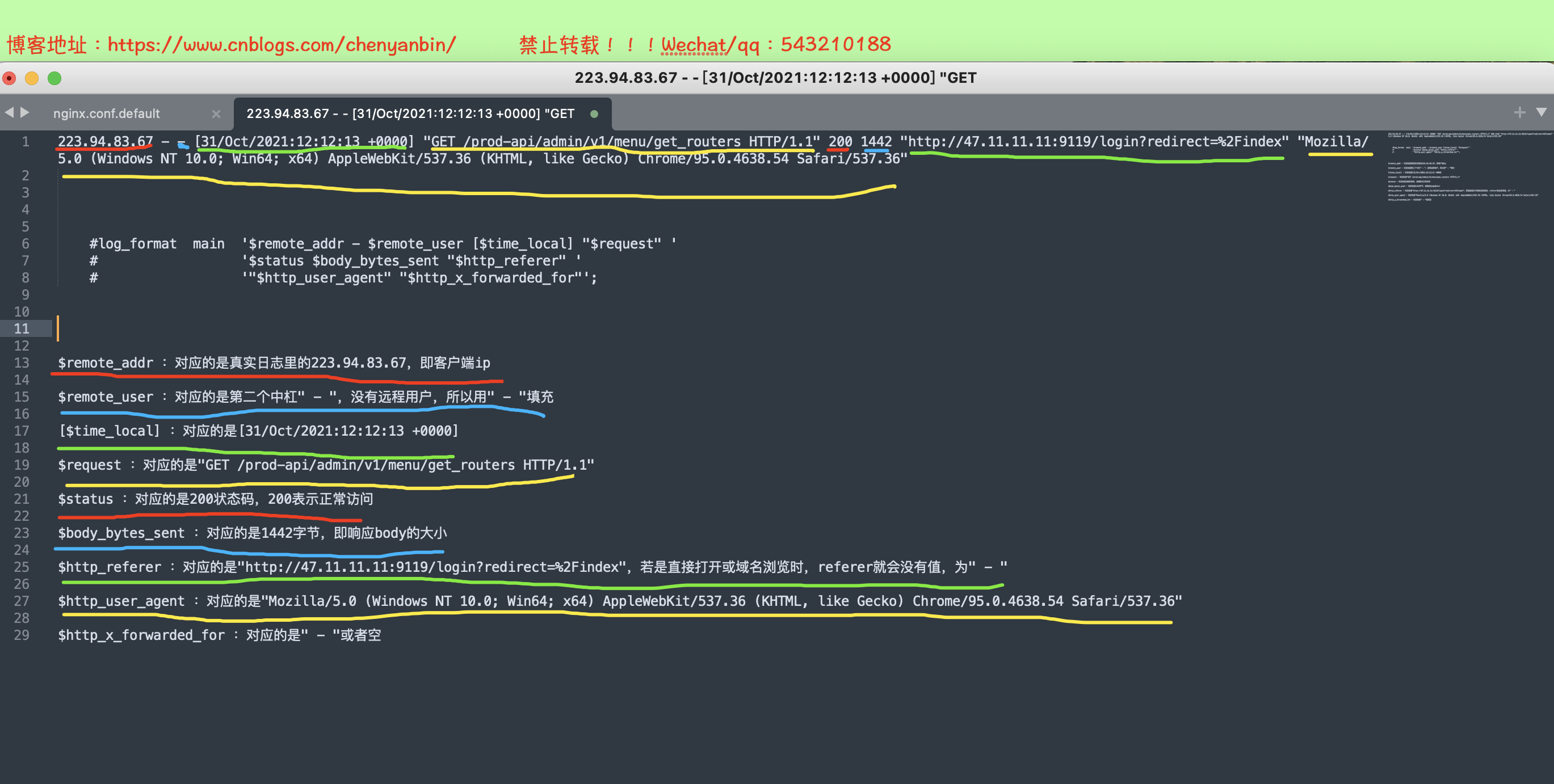
自定义日志统计接口性能
日志格式添加:$request_time
从接受用户请求的第一个字节到发送完响应数据的时间,即包括接收请求数据时间、程序响应时间、输出响应数据时间
$upstream_response_time:指从Nginx向后端建立连接开始到接受完数据然后关闭连接为止的时间
$request_time一般会比upstream_response_time大,因为用户网络较差,或者传递数据较大时,前者会耗时大很多
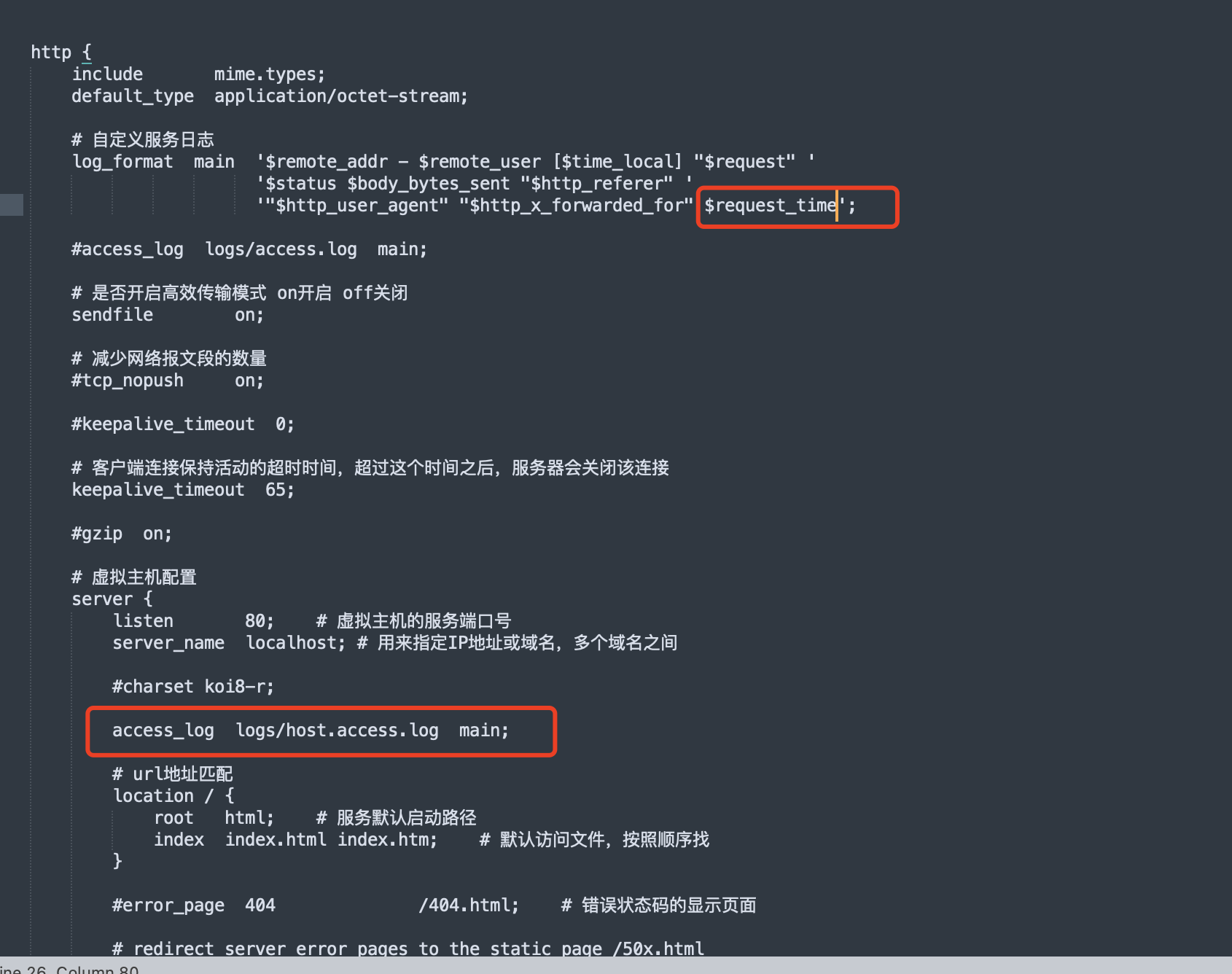
统计耗时接口,列出传输时间超过2秒的接口,显示前5条
cat time_temp.log|awk '($NF > 2){print $7}'|sort -n|uniq -c|sort -nr|head -5
备注:$NF 表示最后一列, awk '{print $NF}'
Nginx站点统计访问量、高频URL
查看访问最频繁的前100个IP
awk '{print $1}' access_temp.log | sort -n |uniq -c | sort -rn | head -n 100
统计访问最多的url前20名
cat access_temp.log |awk '{print $7}'| sort|uniq -c| sort -rn| head -20 | more
- awk 是文本处理工具,默认按照空格切分,$N 是第切割后第N个,从1开始
- sort命令用于将文本文件内容加以排序,-n 按照数值排,-r 按照倒序来排
- 案例的sort -n 是按照第一列的数值大小进行排序,从小到大,倒序就是 sort -rn
- uniq 去除重复出现的行列, -c 在每列旁边显示该行重复出现的次数
nginx负载均衡策略
环境准备
- 安装jdk,点我直达
- 准备2个jar包springboot项目
- demo1.jar 端口号:8888
- demo2.jar 端口号:9999
- 守护方式启动2个jar包:nohup java -jar demoX.jar &
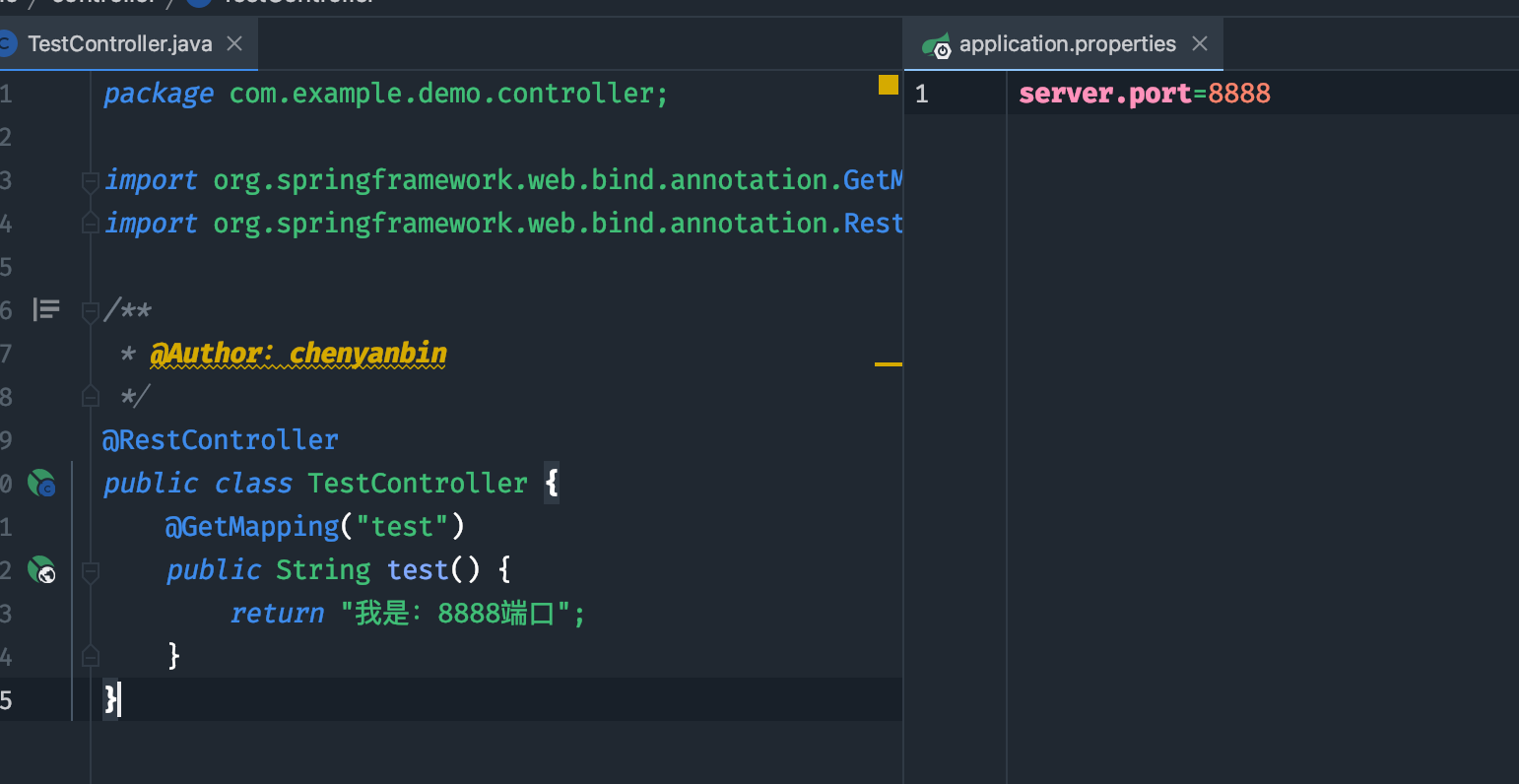
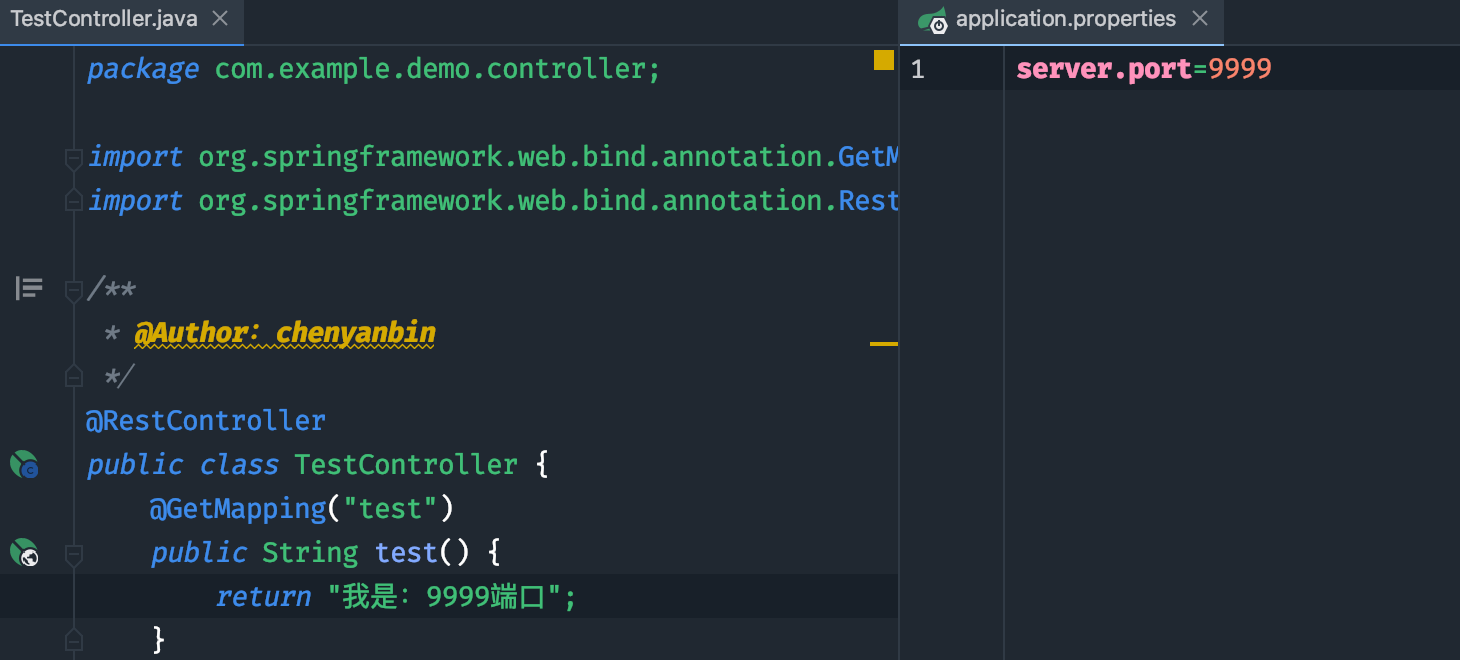

测试接口
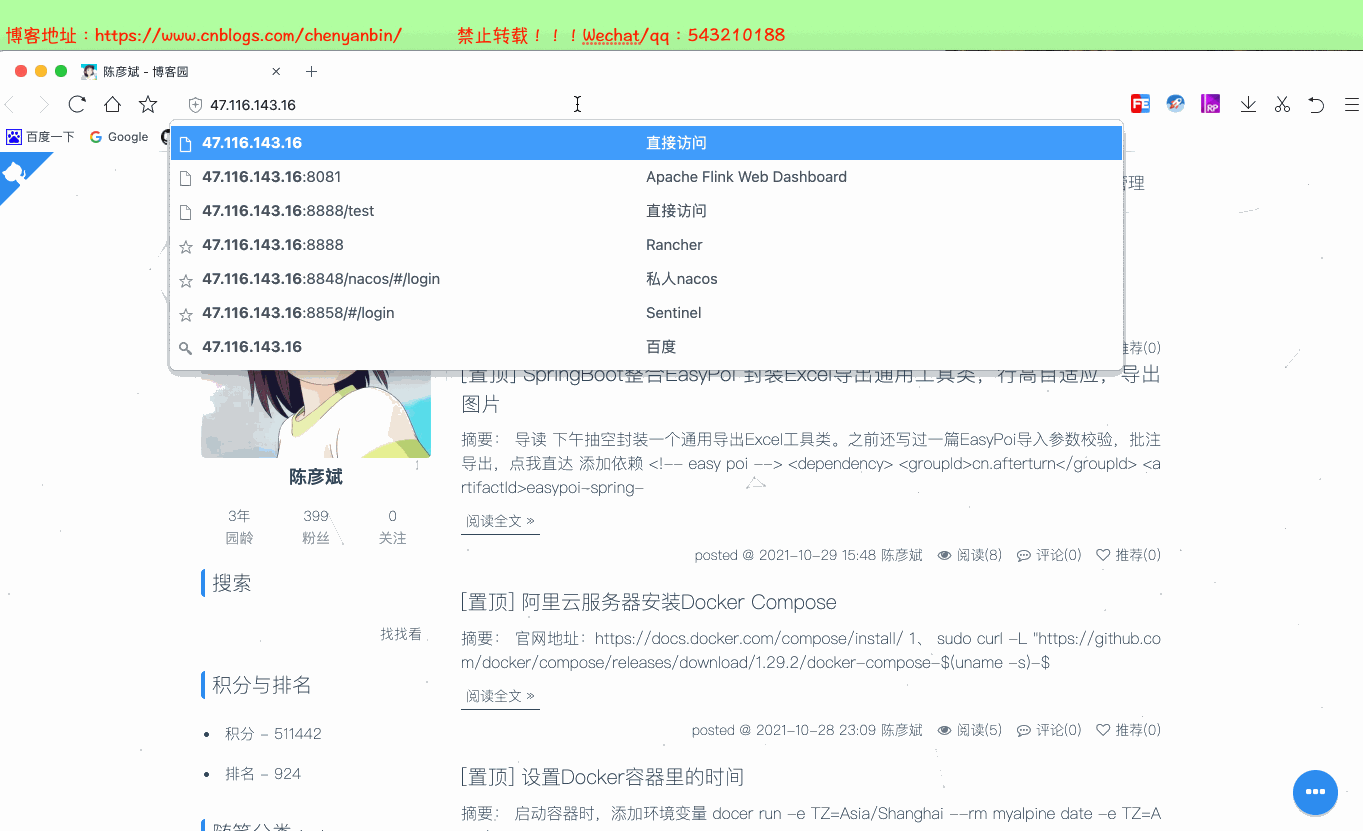
nginx配置负载均衡策略
编辑nginx.conf
#user nobody;
worker_processes 1;
#error_log logs/error.log;
#error_log logs/error.log notice;
#error_log logs/error.log info;
#pid logs/nginx.pid;
events {
worker_connections 1024;
}
http {
include mime.types;
default_type application/octet-stream;
#log_format main '$remote_addr - $remote_user [$time_local] "$request" '
# '$status $body_bytes_sent "$http_referer" '
# '"$http_user_agent" "$http_x_forwarded_for"';
#access_log logs/access.log main;
sendfile on;
#tcp_nopush on;
#keepalive_timeout 0;
keepalive_timeout 65;
#gzip on;
upstream chenyanbin {
server 47.116.143.16:8888 weight=1;
server 47.116.143.16:9999 weight=1;
}
server {
listen 80;
server_name localhost;
#charset koi8-r;
#access_log logs/host.access.log main;
location / {
root html;
index index.html index.htm;
}
location /api/ {
proxy_pass http://chenyanbin;
proxy_set_header Host $host:$server_port;
}
}
}

- 负载均衡策略
- 节点轮询(默认)
- 简介:每个请求按顺序分配到不同的后端服务器
- 场景:会造成可靠性低和负载分配不均衡,适合静态文件服务器
- weight 权重配置
- 简介:weight和访问比率成正比,数字越大,分配得到的流量越高
- 场景:服务器性能差异大的情况使用
- ip_hash(固定分发)
- 简介:根据请求按访问ip的hash结果分配,这样每个用户就可以固定访问一个后端服务器
- 场景:服务器业务分区、业务缓存、Session需要单点的情况
- 节点轮询(默认)
ip_hash示例
upstream chenyanbin {
ip_hash;
server 47.116.143.16:8888 weight=1;
server 47.116.143.16:9999 weight=1;
}
- 标记节点状态
- down 表示当前的server暂时不参与负载
- backup 其它所有的非backup机器down的时候,会请求backup机器,这台机器压力会最轻,配置也会相对低(三市五中心机房,异地多活架构!!!!)
标记节点状态示例
upstream chenyanbin {
server 47.116.143.16:8888 weight=1 down;
server 47.116.143.16:9999 weight=1 backup;
}
重启nginx
cd /usr/local/nginx/sbin/
./nginx -s reload
演示
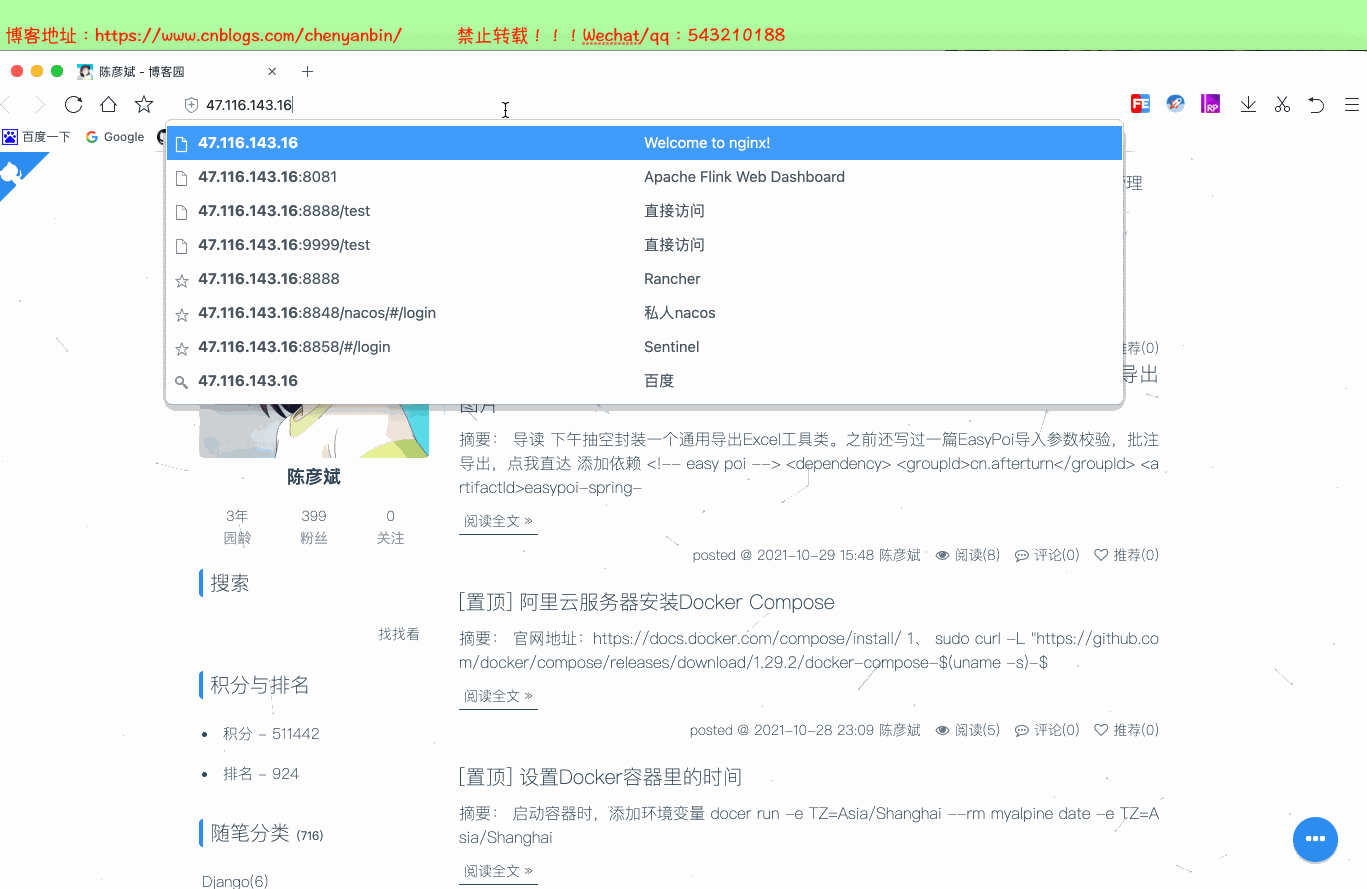
Nginx可用性探测
如果某个应用挂了,请求不应该继续分发过去
-
max_fails 允许请求失败的次数,默认为1.当超过最大次数时就不会请求
-
fail_timeout : max_fails次失败后,暂停的时间,默认:fail_timeout为10s
- 可以通过指令proxy_next_upstream来配置什么是失败的尝试
upstream chenyanbin {
server 47.116.143.16:8888 max_fails=2 fail_timeout=60s;
server 47.116.143.16:9999 max_fails=2 fail_timeout=60s;
}
location /api/ {
proxy_pass http://chenyanbin;
proxy_set_header Host $host:$server_port;
proxy_next_upstream error timeout http_500 http_503 http_404;
}

备注:连续2次失败,在60秒内,nginx不会再将请求分发过去,第61秒时,会重试该节点是否可用!!!
nginx经典应用
nginx自定义全局异常json兜底数据
nginx.conf配置
location /api/ {
proxy_pass http://chenyanbin/;
proxy_set_header Host $host:$server_port;
proxy_next_upstream error timeout http_500 http_503 http_404;
# 存放用户的真实ip
proxy_set_header X-Real-IP $remote_addr;
proxy_set_header X-Forwarded-For $proxy_add_x_forwarded_for;
#开启错误拦截配置,一定要开启
proxy_intercept_errors on;
}
error_page 404 500 502 503 504 =200 /default_api;
location = /default_api {
default_type application/json;
return 200 '{"code":"-1","msg":"invoke fail, not found "}';
}
演示

Nginx封禁恶意IP
1、cd /usr/local/nginx/conf
2、touch blacklist.conf
3、vi blacklist.conf
# 写入如下内容
deny 101.93.218.231;
4、vi nginx.conf
# 全局其效果,放到http{}代码块中;针对某个网站起效果,放到server{}代码块中
http{
#......
include blacklist.conf;
}
server{
#....
include blacklist.conf;
}

注意:从access.log日志中,查看访问ip列表(/usr/local/nginx/logs)
Nginx配置浏览器跨域
修改nginx.conf
location /api/ {
proxy_pass http://chenyanbin/;
proxy_set_header Host $host:$server_port;
proxy_next_upstream error timeout http_500 http_503 http_404;
proxy_set_header X-Real-IP $remote_addr;
proxy_set_header X-Forwarded-For $proxy_add_x_forwarded_for;
proxy_intercept_errors on;
# 配置跨域
add_header 'Access-Control-Allow-Origin' $http_origin;
add_header 'Access-Control-Allow-Credentials' 'true';
add_header 'Access-Control-Allow-Headers' 'DNT,web-token,app-token,Authorization,Accept,Origin,Keep-Alive,User-Agent,X-Mx-ReqToken,X-Data-Type,X-Auth-Token,X-Requested-With,If-Modified-Since,Cache-Control,Content-Type,Range';
add_header Access-Control-Allow-Methods 'GET,POST,OPTIONS';
if ($request_method = 'OPTIONS') {
add_header 'Access-Control-Max-Age' 1728000;
add_header 'Content-Type' 'text/plain; charset=utf-8';
add_header 'Content-Length' 0;
return 200;
}
}

Nginx配置websocket反向代理
location /api/ {
proxy_pass http://chenyanbin/;
proxy_set_header Host $host:$server_port;
proxy_read_timeout 300s; //websocket空闲保持时长
proxy_set_header Host $host;
proxy_set_header X-Real-IP $remote_addr;
proxy_set_header X-Forwarded-For $proxy_add_x_forwarded_for;
proxy_http_version 1.1;
# 添加下面2句话
proxy_set_header Upgrade $http_upgrade;
proxy_set_header Connection $connection_upgrade;
}
Nginx压缩配置(重要)
对文本、js和css文件等进行压缩,一般压缩后的大小是原始大小的25%
nginx.conf
#开启gzip,减少我们发送的数据量
gzip on;
gzip_min_length 1k;
#4个单位为16k的内存作为压缩结果流缓存
gzip_buffers 4 16k;
#gzip压缩比,可在1~9中设置,1压缩比最小,速度最快,9压缩比最大,速度最慢,消耗CPU
gzip_comp_level 4;
#压缩的类型
gzip_types application/javascript text/plain text/css application/json application/xml text/javascript;
#给代理服务器用的,有的浏览器支持压缩,有的不支持,所以避免浪费不支持的也压缩,所以根据客户端的HTTP头来判断,是否需要压缩
gzip_vary on;
#禁用IE6以下的gzip压缩,IE某些版本对gzip的压缩支持很不好
gzip_disable "MSIE [1-6].";
location /static {
alias /usr/local/software/static;
}
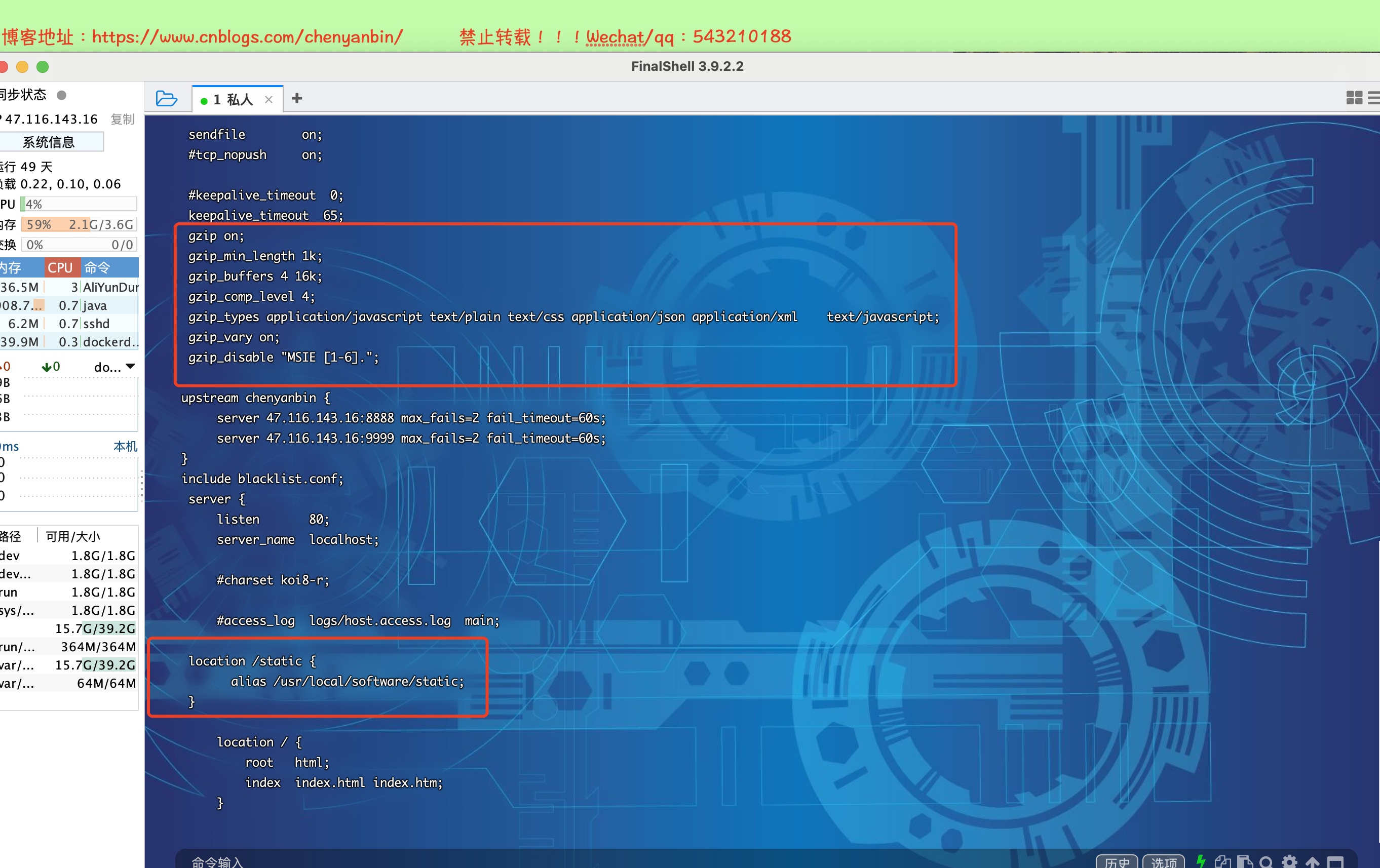

配置https
申请证书:点我直达


上传至服务器中

删除原先nginx,新增ssl模块
1、干掉nginx进程
ps -ef|grep nginx
kill -9 14940
kill -9 22054
2、删除nginx
rm -rf /usr/local/nginx/
3、进入nginx解压包位置
cd /usr/local/software/service/nginx-1.20.1
4、重新编辑安装nginx
./configure --prefix=/usr/local/nginx --with-http_stub_status_module --with-http_ssl_module
make
make install
5、修改nginx配置文件
cd /usr/local/nginx/conf/
vi nginx.conf
/usr/local/software/cas/6580070_chenyanbin.site.key
/usr/local/software/cas/6580070_chenyanbin.site.pem
chenyanbin.site
6、启动nginx
./nginx
7、关闭防火墙
service firewalld stop
8、阿里云上开启网络安全组:443端口号
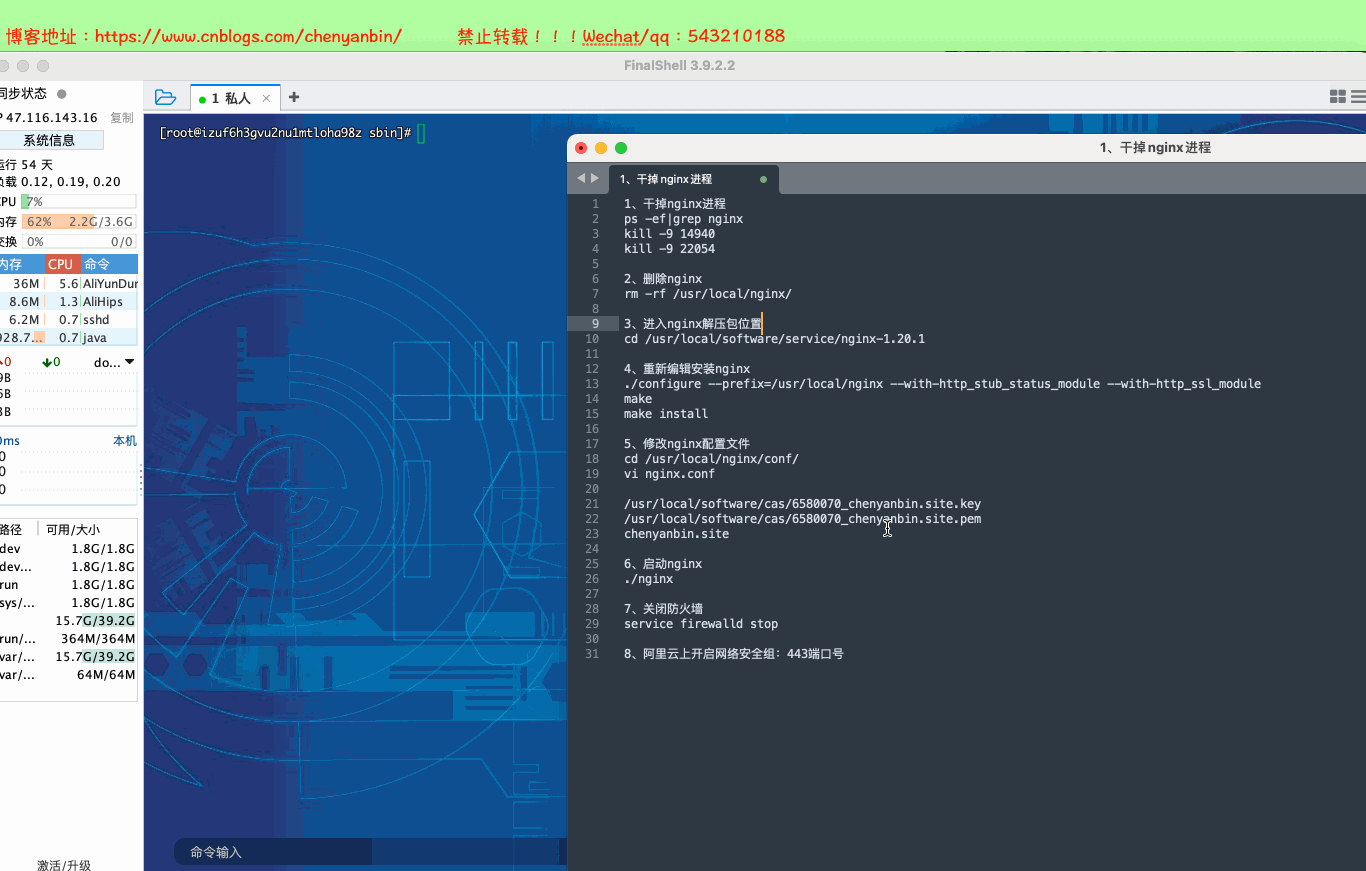
完整nginx.conf配置如下, 只需要修改:server_name、ssl_certificate、ssl_certificate_key
#user nobody;
worker_processes 1;
#error_log logs/error.log;
#error_log logs/error.log notice;
#error_log logs/error.log info;
#pid logs/nginx.pid;
events {
worker_connections 1024;
}
http {
include mime.types;
default_type application/octet-stream;
#log_format main '$remote_addr - $remote_user [$time_local] "$request" '
# '$status $body_bytes_sent "$http_referer" '
# '"$http_user_agent" "$http_x_forwarded_for"';
#access_log logs/access.log main;
sendfile on;
#tcp_nopush on;
#keepalive_timeout 0;
keepalive_timeout 65;
#gzip on;
server {
listen 80;
server_name localhost;
#charset koi8-r;
#access_log logs/host.access.log main;
location / {
root html;
index index.html index.htm;
}
#error_page 404 /404.html;
# redirect server error pages to the static page /50x.html
#
error_page 500 502 503 504 /50x.html;
location = /50x.html {
root html;
}
# proxy the PHP scripts to Apache listening on 127.0.0.1:80
#
#location ~ \.php$ {
# proxy_pass http://127.0.0.1;
#}
# pass the PHP scripts to FastCGI server listening on 127.0.0.1:9000
#
#location ~ \.php$ {
# root html;
# fastcgi_pass 127.0.0.1:9000;
# fastcgi_index index.php;
# fastcgi_param SCRIPT_FILENAME /scripts$fastcgi_script_name;
# include fastcgi_params;
#}
# deny access to .htaccess files, if Apache's document root
# concurs with nginx's one
#
#location ~ /\.ht {
# deny all;
#}
}
# another virtual host using mix of IP-, name-, and port-based configuration
#
#server {
# listen 8000;
# listen somename:8080;
# server_name somename alias another.alias;
# location / {
# root html;
# index index.html index.htm;
# }
#}
# HTTPS server
#
server {
listen 443 ssl;
server_name chenyanbin.site;
ssl_certificate /usr/local/software/cas/6580070_chenyanbin.site.pem;
ssl_certificate_key /usr/local/software/cas/6580070_chenyanbin.site.key;
ssl_session_cache shared:SSL:1m;
ssl_session_timeout 5m;
ssl_ciphers HIGH:!aNULL:!MD5;
ssl_prefer_server_ciphers on;
location / {
root html;
index index.html index.htm;
}
}
}
#user nobody;
worker_processes 1;
#error_log logs/error.log;
#error_log logs/error.log notice;
#error_log logs/error.log info;
#pid logs/nginx.pid;
events {
worker_connections 1024;
}
http {
include mime.types;
default_type application/octet-stream;
#log_format main '$remote_addr - $remote_user [$time_local] "$request" '
# '$status $body_bytes_sent "$http_referer" '
# '"$http_user_agent" "$http_x_forwarded_for"';
#access_log logs/access.log main;
sendfile on;
#tcp_nopush on;
#keepalive_timeout 0;
keepalive_timeout 65;
#gzip on;
upstream halo {
server 127.0.0.1:8090;
}
server {
listen 80;
server_name localhost;
#charset koi8-r;
#access_log logs/host.access.log main;
location / {
proxy_pass http://halo;
proxy_set_header HOST $host;
proxy_set_header X-Forwarded-Proto $scheme;
proxy_set_header X-Real-IP $remote_addr;
proxy_set_header X-Forwarded-For $proxy_add_x_forwarded_for;
}
#error_page 404 /404.html;
# redirect server error pages to the static page /50x.html
#
error_page 500 502 503 504 /50x.html;
location = /50x.html {
root html;
}
}
# HTTPS server
#
server {
listen 443 ssl;
server_name chenyanbin.site;
ssl_certificate /usr/local/software/cas/6580070_chenyanbin.site.pem;
ssl_certificate_key /usr/local/software/cas/6580070_chenyanbin.site.key;
ssl_session_cache shared:SSL:1m;
ssl_session_timeout 5m;
ssl_ciphers HIGH:!aNULL:!MD5;
ssl_prefer_server_ciphers on;
location / {
proxy_pass http://halo;
proxy_set_header HOST $host;
proxy_set_header X-Forwarded-Proto $scheme;
proxy_set_header X-Real-IP $remote_addr;
proxy_set_header X-Forwarded-For $proxy_add_x_forwarded_for;
}
}
}
访问http自动跳转到https(80端口会自动转给443端口,这样就强制使用SSL证书加密了。访问http的时候会自动跳转到https上面)
server { listen 80; server_name chenyanbin.site; rewrite ^(.*) https://$server_name$1 permanent; }
server {
listen 443 ssl;
server_name chenyanbin.site;
ssl_certificate /usr/local/software/cas/6580070_chenyanbin.site.pem;
ssl_certificate_key /usr/local/software/cas/6580070_chenyanbin.site.key;
ssl_session_cache shared:SSL:1m;
ssl_session_timeout 5m;
ssl_ciphers HIGH:!aNULL:!MD5;
ssl_prefer_server_ciphers on;
location / {
proxy_pass http://halo;
proxy_set_header HOST $host;
proxy_set_header X-Forwarded-Proto $scheme;
proxy_set_header X-Real-IP $remote_addr;
proxy_set_header X-Forwarded-For $proxy_add_x_forwarded_for;
}
}


